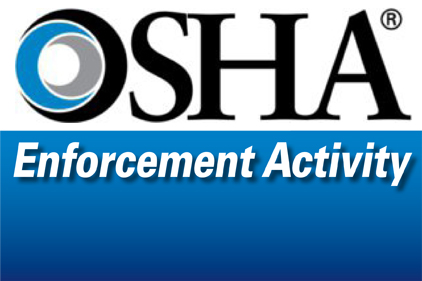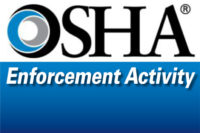 Outdoor Furniture Refinishing Inc., doing business as Allied Powder Coating, has been cited by OSHA for 15 serious health and safety violations with a proposed fine of $55,440. OSHA cited the sandblasting and powder coating company for exposing workers to toxic chemicals, including silica, beyond established occupational limits. OSHA initiated the February 2013 inspection at the company's Houston facility under its Regional Emphasis Program on Safety and Health Hazards in the Manufacture of Fabricated Metal Products.
Outdoor Furniture Refinishing Inc., doing business as Allied Powder Coating, has been cited by OSHA for 15 serious health and safety violations with a proposed fine of $55,440. OSHA cited the sandblasting and powder coating company for exposing workers to toxic chemicals, including silica, beyond established occupational limits. OSHA initiated the February 2013 inspection at the company's Houston facility under its Regional Emphasis Program on Safety and Health Hazards in the Manufacture of Fabricated Metal Products.
"Allied Powder Coating has a responsibility to provide a safe workplace for its employees," said Mark Briggs, OSHA's area director in the Houston South Area Office. "OSHA standards are in place to protect workers from predictable and preventable injuries and illnesses, and the company ignored these standards at the expense of worker safety."
Toxins and noise
The serious violations include exposing workers to crystalline silica above the occupational exposure limit. Crystalline silica can cause lung cancer, silicosis, chronic obstructive pulmonary disease and kidney disease in workers. The company also failed to institute a noise monitoring program that included audiometric testing for workers exposed to noise in excess of 90 decibels.
Spray booth lacked alarm, sprinklers, exhaust
Additionally, the spray booth was not equipped with an alarm to indicate proper maintenance of required air velocity, nor was it equipped with sprinklers or an exhaust that discharged to the building's exterior. Further, workers were not fit tested or medically evaluated for respirators, and the respirators were not properly stored and inspected prior to use. A serious violation occurs when there is substantial probability that death or serious physical harm could result from a hazard about which the employer knew or should have known.
OSHA recently released a proposed rule to protect workers exposed to respirable crystalline silica. OSHA estimates that the proposed rule will save nearly 700 lives and prevent 1,600 new cases of silicosis per year, once the full effects of the rule are realized.
"The proposed rule is the result of extensive review of scientific evidence relating to the health risks of exposure to respirable crystalline silica, analysis of the diverse industries where worker exposure to crystalline silica occurs and robust outreach efforts to affected stakeholders," according to the agency.
OSHA currently enforces 40-year-old permissible exposure limits for crystalline silica in general industry, construction and shipyards that are outdated and inconsistent between industries.



